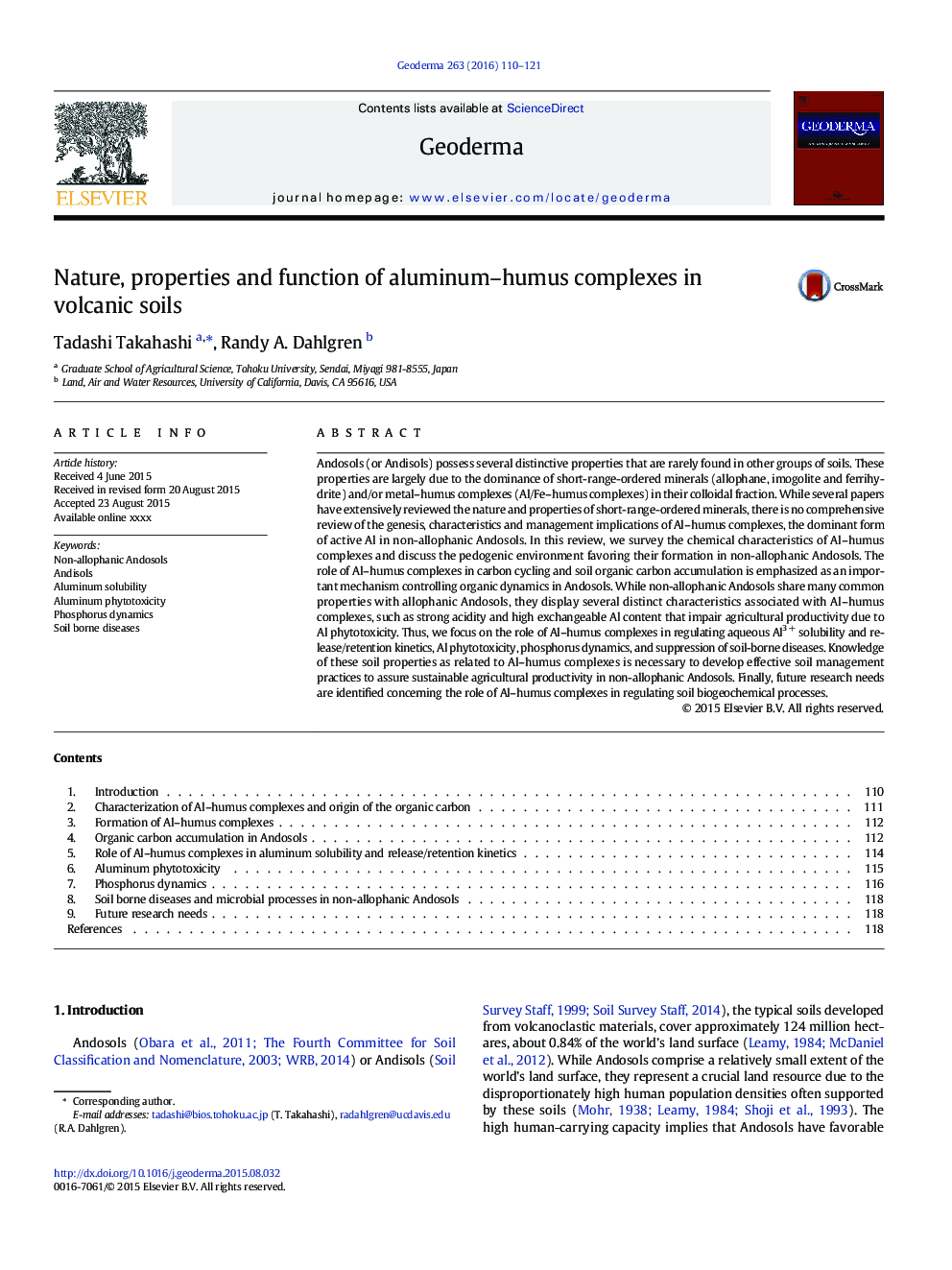| Article ID | Journal | Published Year | Pages | File Type |
|---|---|---|---|---|
| 6408464 | Geoderma | 2016 | 12 Pages |
Abstract
Andosols (or Andisols) possess several distinctive properties that are rarely found in other groups of soils. These properties are largely due to the dominance of short-range-ordered minerals (allophane, imogolite and ferrihydrite) and/or metal-humus complexes (Al/Fe-humus complexes) in their colloidal fraction. While several papers have extensively reviewed the nature and properties of short-range-ordered minerals, there is no comprehensive review of the genesis, characteristics and management implications of Al-humus complexes, the dominant form of active Al in non-allophanic Andosols. In this review, we survey the chemical characteristics of Al-humus complexes and discuss the pedogenic environment favoring their formation in non-allophanic Andosols. The role of Al-humus complexes in carbon cycling and soil organic carbon accumulation is emphasized as an important mechanism controlling organic dynamics in Andosols. While non-allophanic Andosols share many common properties with allophanic Andosols, they display several distinct characteristics associated with Al-humus complexes, such as strong acidity and high exchangeable Al content that impair agricultural productivity due to Al phytotoxicity. Thus, we focus on the role of Al-humus complexes in regulating aqueous Al3Â + solubility and release/retention kinetics, Al phytotoxicity, phosphorus dynamics, and suppression of soil-borne diseases. Knowledge of these soil properties as related to Al-humus complexes is necessary to develop effective soil management practices to assure sustainable agricultural productivity in non-allophanic Andosols. Finally, future research needs are identified concerning the role of Al-humus complexes in regulating soil biogeochemical processes.
Keywords
Related Topics
Physical Sciences and Engineering
Earth and Planetary Sciences
Earth-Surface Processes
Authors
Tadashi Takahashi, Randy A. Dahlgren,
